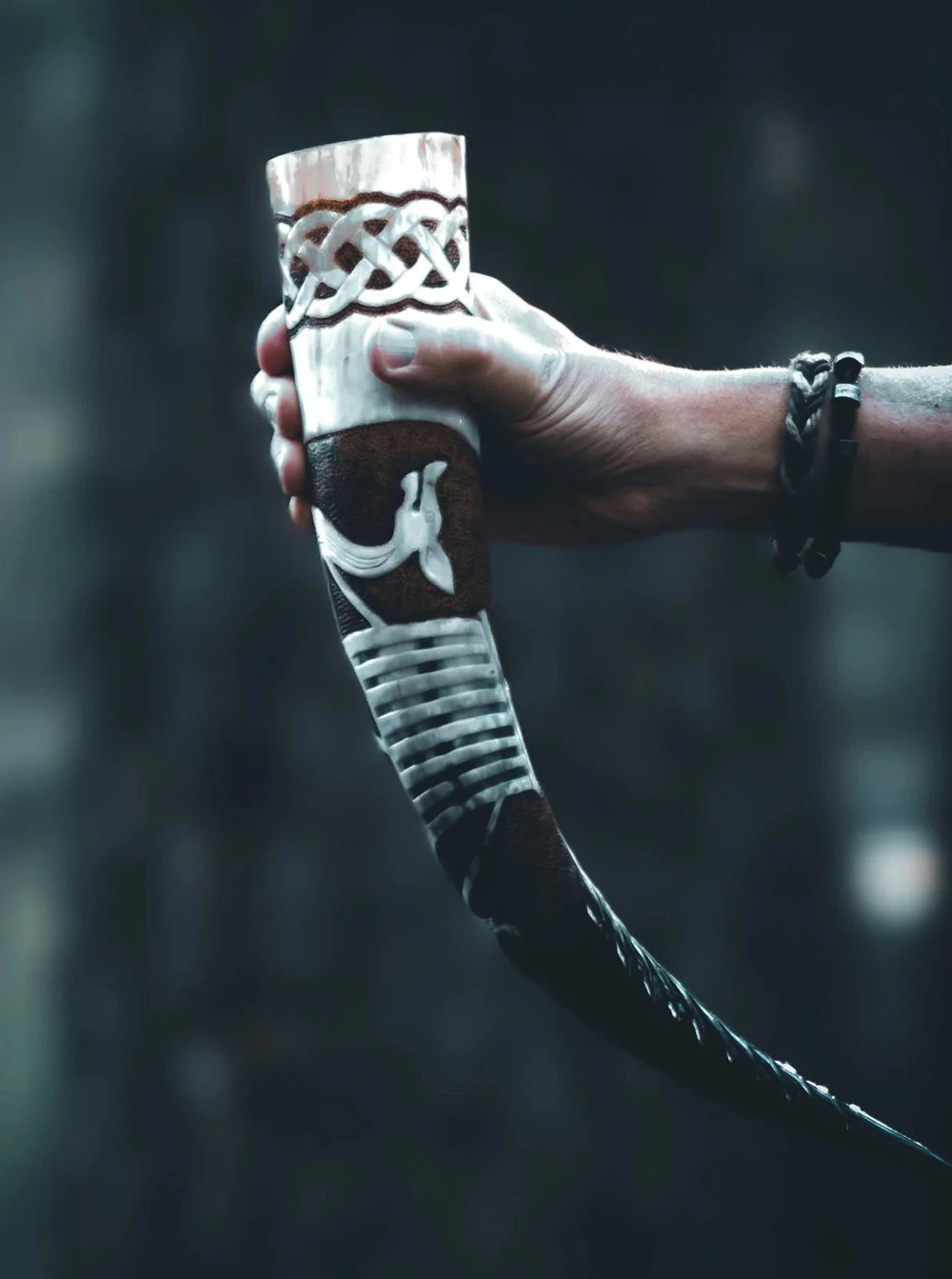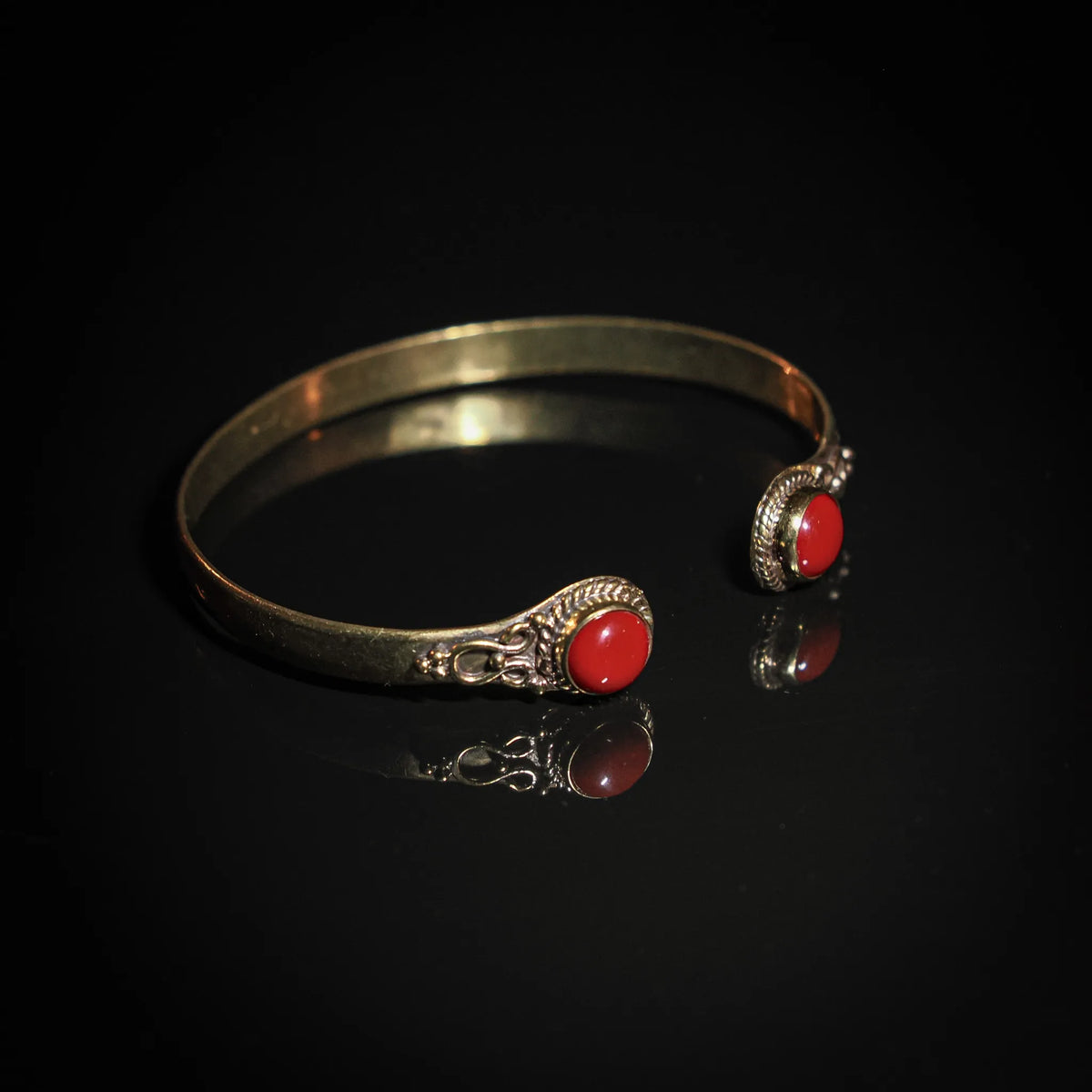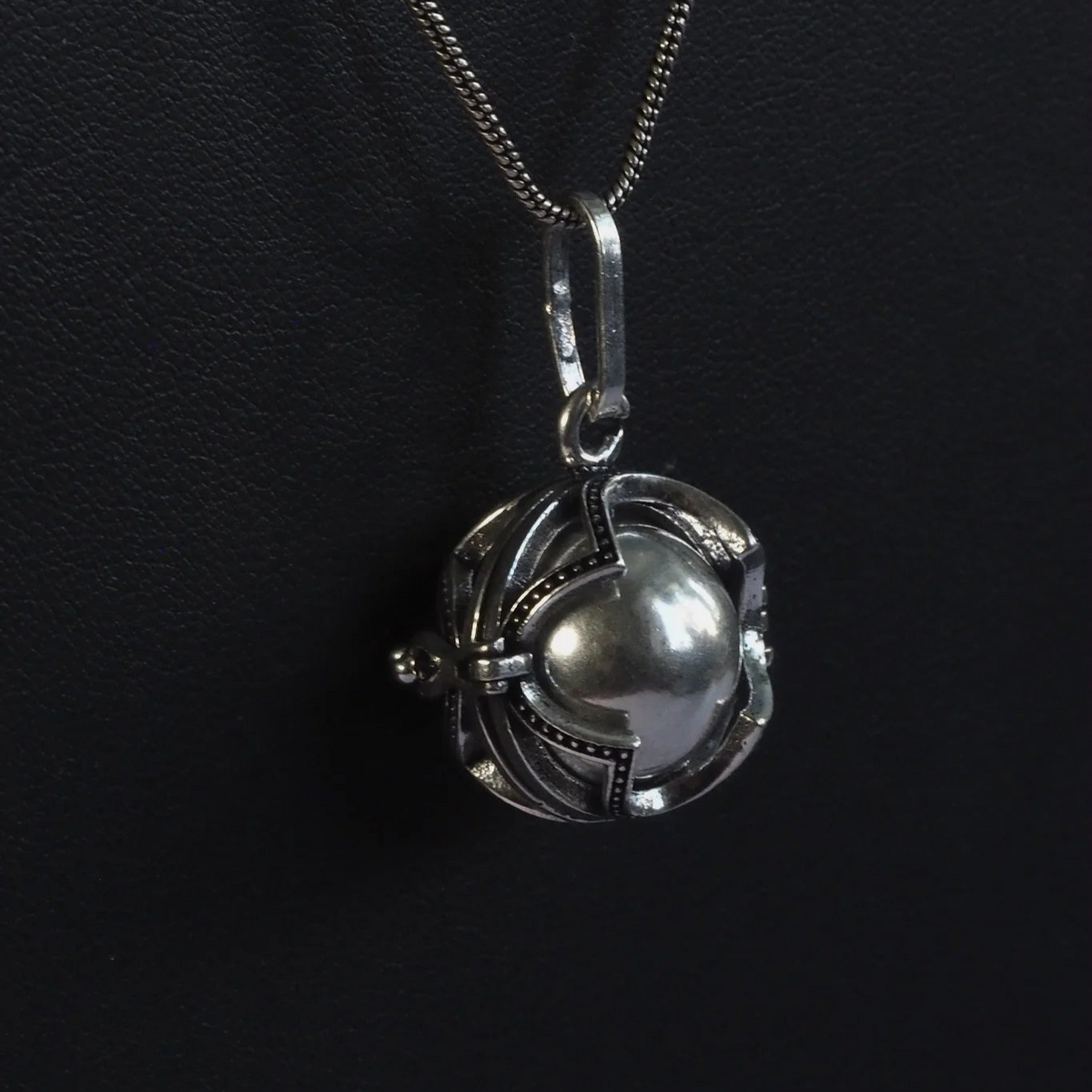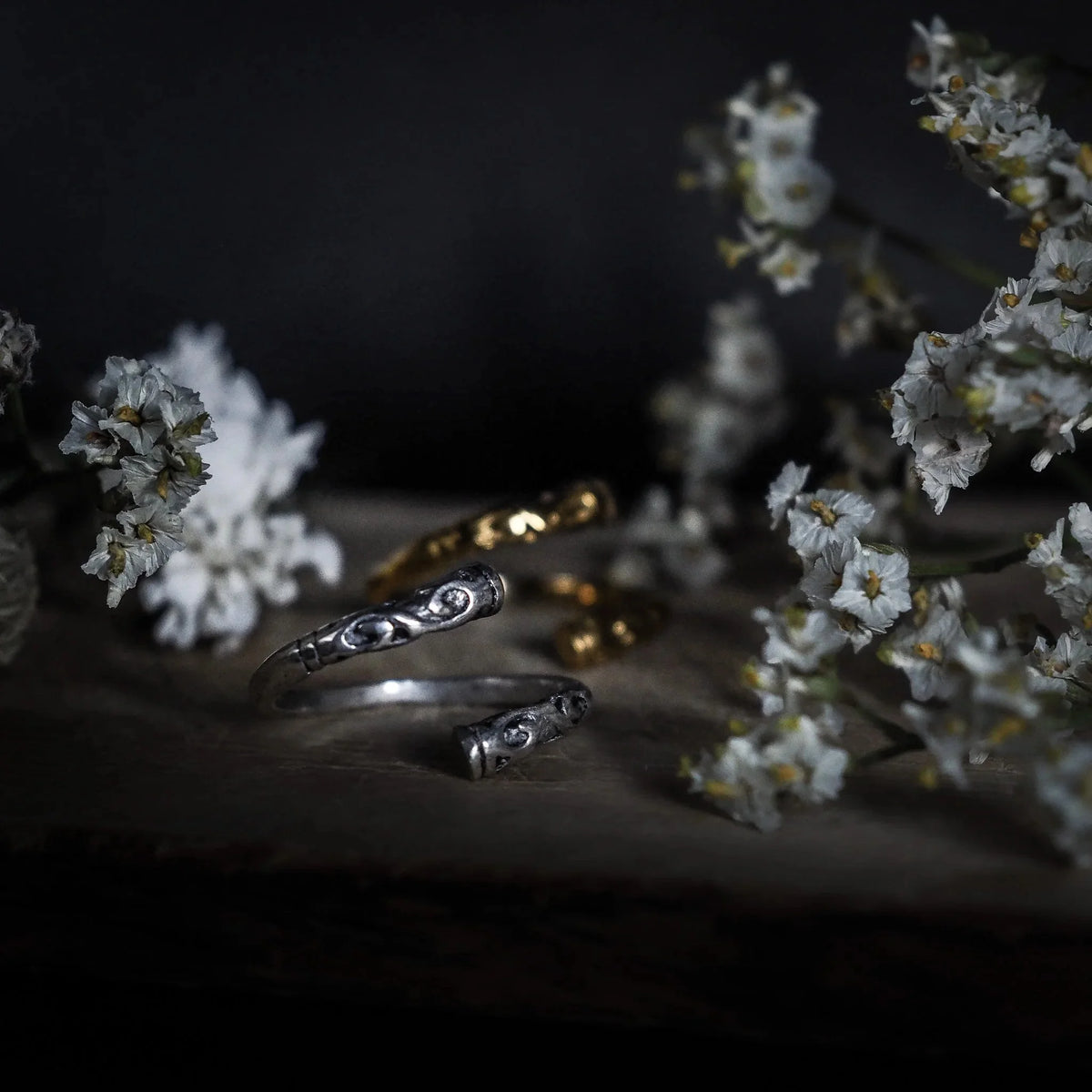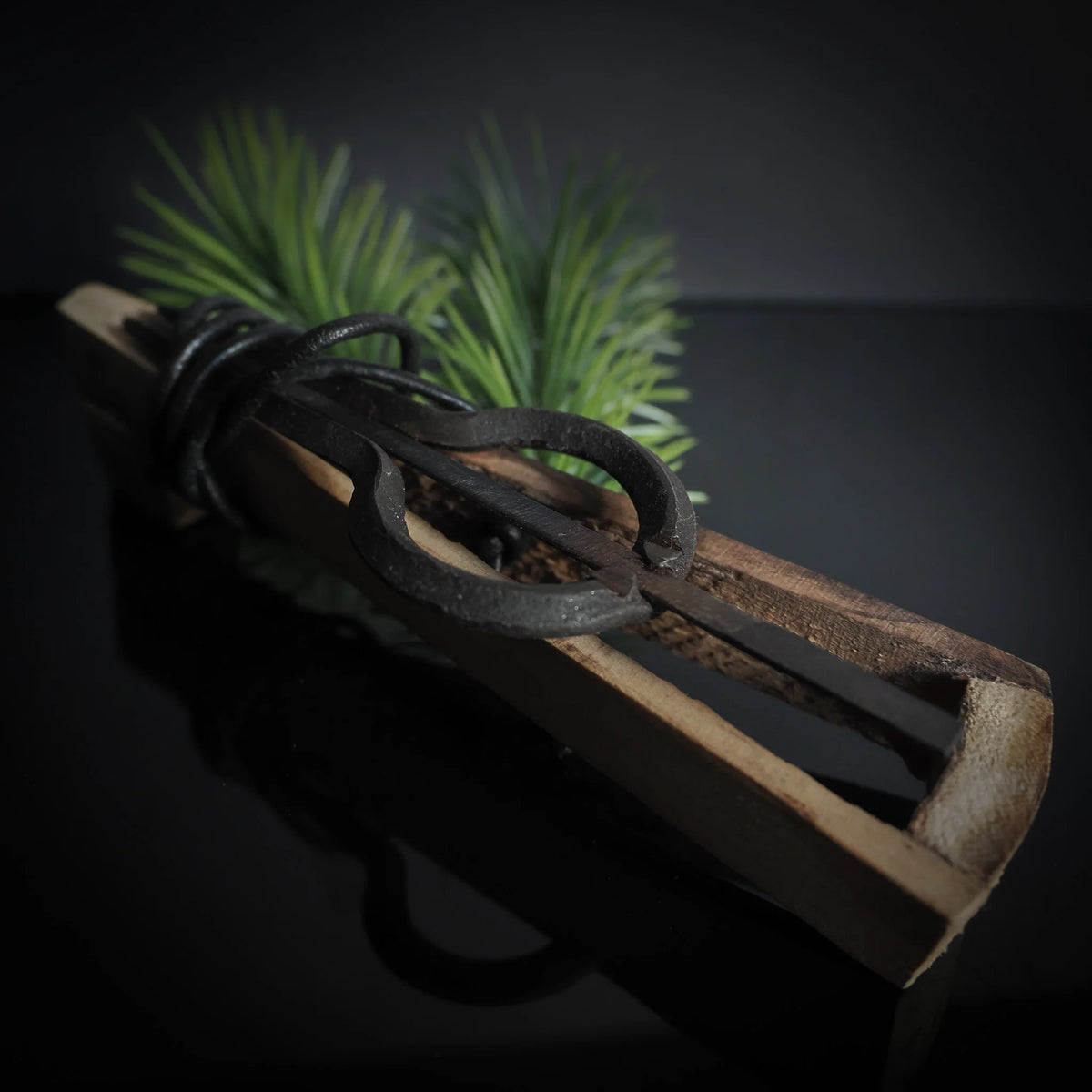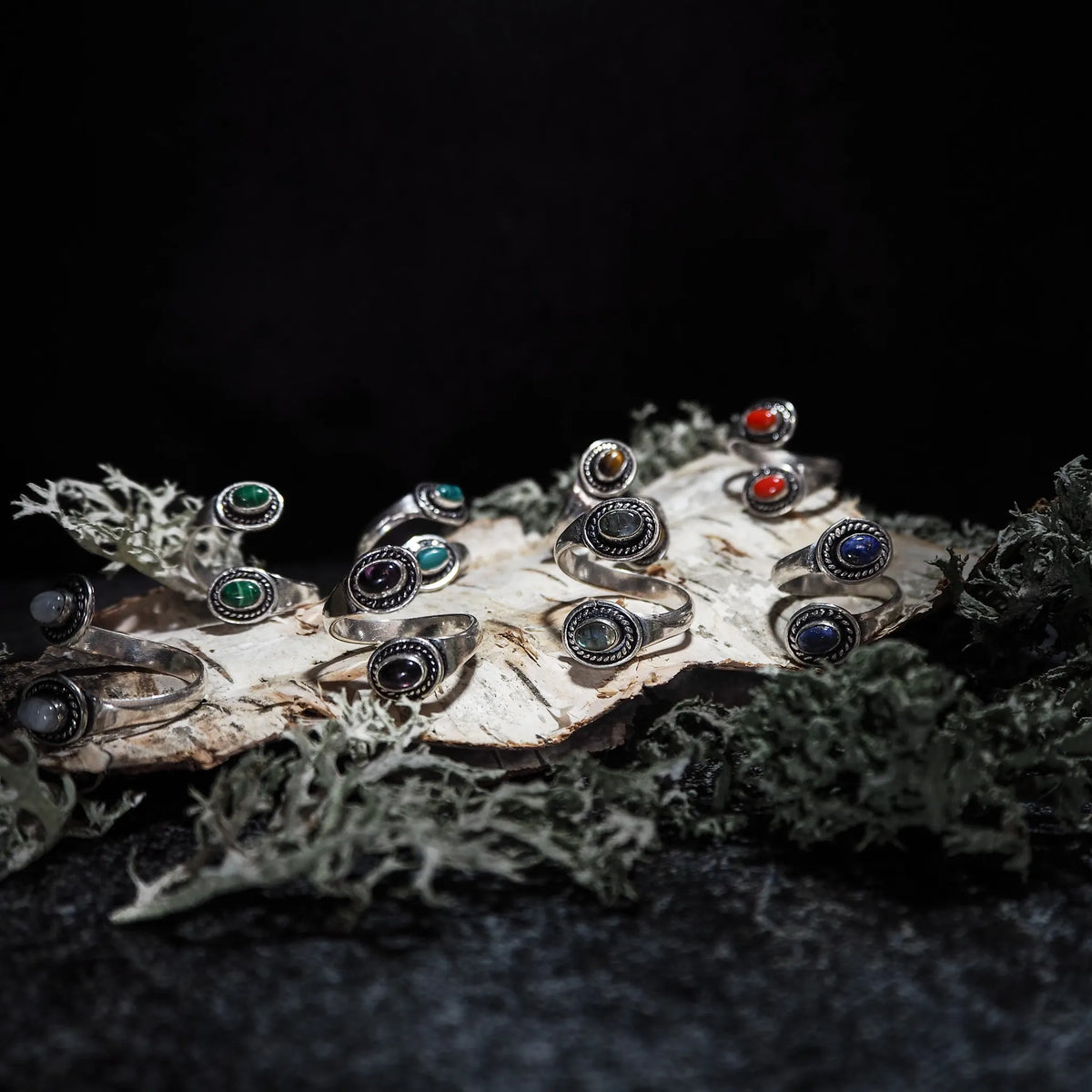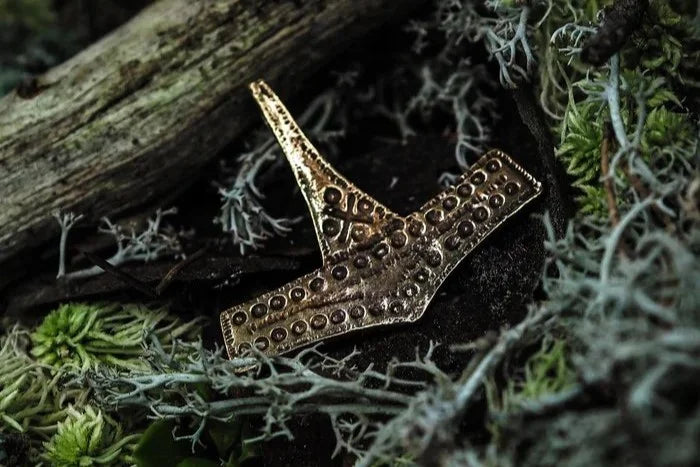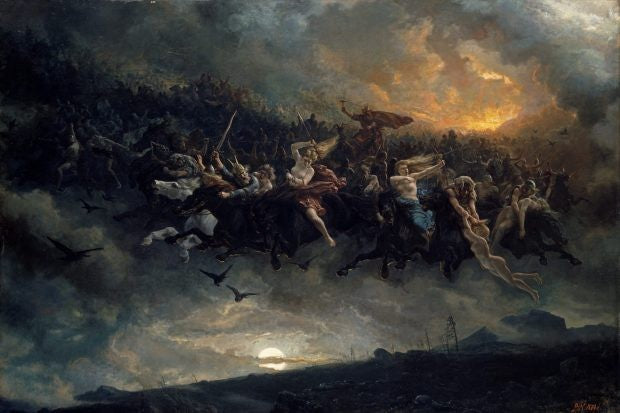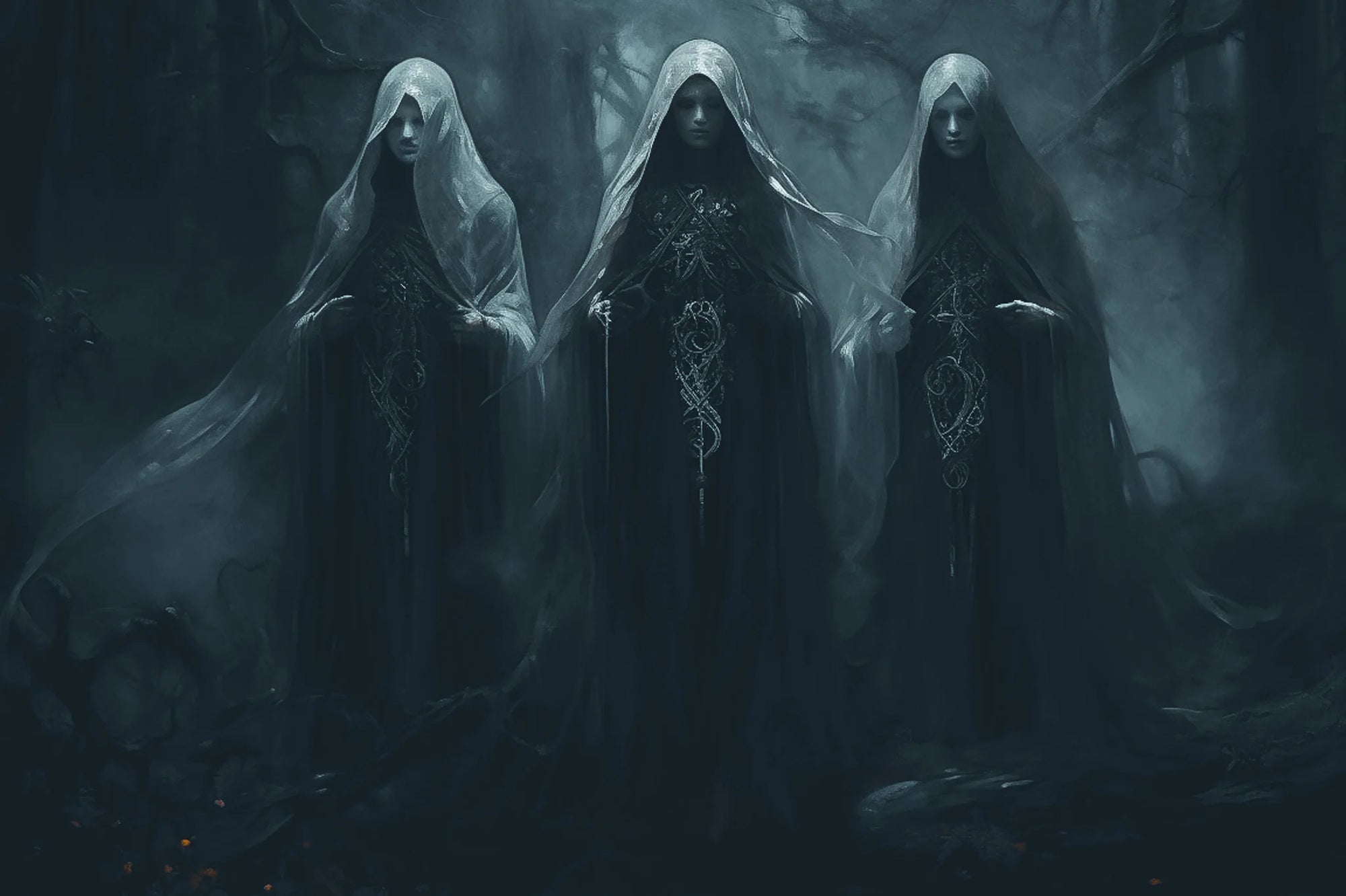The hammer of Thor, known as "Mjölnir", is one of the most iconic symbols in Norse mythology and represents not only the god Thor, but also a deeper understanding of the world and its cosmic order. Mjölnir is a mighty hammer, created by the dwarves Brokkr and Sindri, and stands as a symbol of protection, strength and the power of thunder.
The hammer in the picture is a copy of a finding from Bornholm (Denmark).
The origin and symbolism of Mjölnir.
According to Old Norse literature, especially in works such as the "Edda" by Snorre Sturlasson and the "Elder Edda", Mjölnir is a creation of the fantastic craftsmanship of the dwarves.
It is essentially a tool for bringing order to the world, reflecting Thor's role as protector of humanity and the gods.
Mjölnir is not only a hammer for striking enemies, it is also a tool of blessing and protection, making it central to various rituals and ceremonies.
Thor, son of Odin and Fjorgyn/ Earth, is the god of thunder, lightning and storms. He is often seen as a warrior, but also as a protector of farmers and their crops. Mjölnir is used in several mythological stories to protect Asgard, the gods and humans from the giants (jötnar), who often represent chaos and disorder. The hammer may also reflect the natural balance of the world, with Thor struggling to maintain order against the forces that threaten to overthrow it.
Myths involving Mjölnir, is is among many, the story of how Thor lost his hammer. In the "Edda" it is told how the giant Trym, stole Mjölnir and demanded Freya as his wife in exchange for returning it. Thor, dressed in women's clothing, and Loki, who accompanies him, manage to outwit the giant and recover the hammer. This story illustrates not only Tor's strength but also his cunning and ability to navigate difficult situations.
Another aspect of Mjölnir is its role in ritual contexts. The hammer was used at weddings to bless the marriage and in other ceremonies involving the transitions of life.
The Torshammer and nature.
Another interesting view of Mjölnir is its connection to nature. Thor is often associated with thunder and lightning, and Mjölnir symbolizes these forces. In many cultures, thunder has been seen as a manifestation of divine presence and power. This makes Mjölnir not only represent Thor as a warrior, but also his role as a god of nature, maintaining the balance between life and death.
Throughout history, people have always seen the forces of nature as something that must be respected and understood, in this context Torshammaren becomes a reminder of the importance of living in harmony with the world around us.
The hammer of Thor, or Mjölnir, is more than just a mythological artifact. It is a symbol of strength, protection and the balance that Tor represents. Through myth and legend, Mjölnir has preserved its significance throughout the centuries and continues to inspire and fascinate people today.
In a time where many are searching for identity and roots, Torshammaren offers a reconnection to the past, to nature and to the ancient traditions. This mythological symbol lives on, both in our history and in our time.
Sources:
Snorre Sturlasson, "Edda" (translation and commentary).
"Elder Edda", translated by Carolyne Larrington.
"Myth and Meaning in Early Northern Europe" av Thomas Dubois, folklorist.
